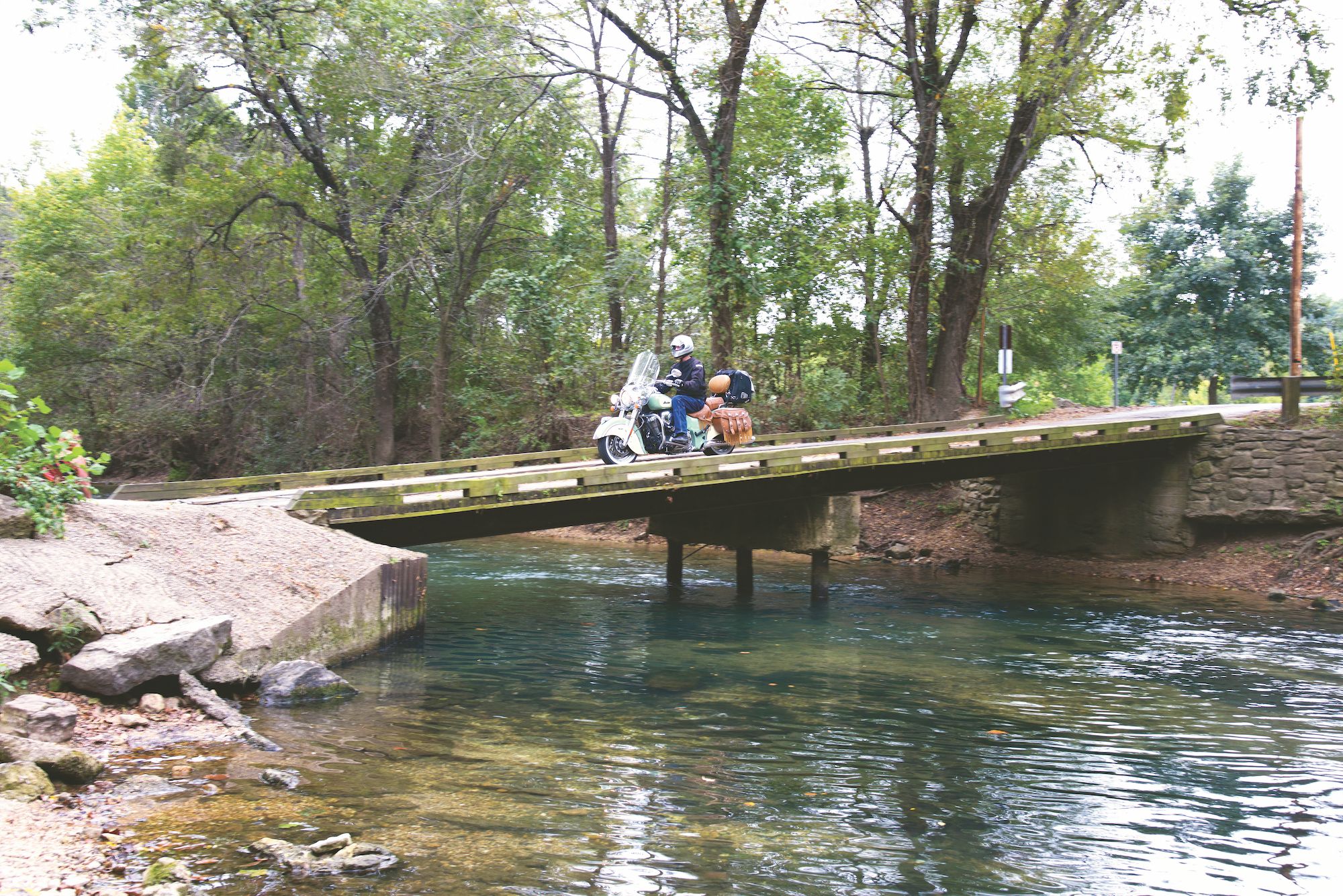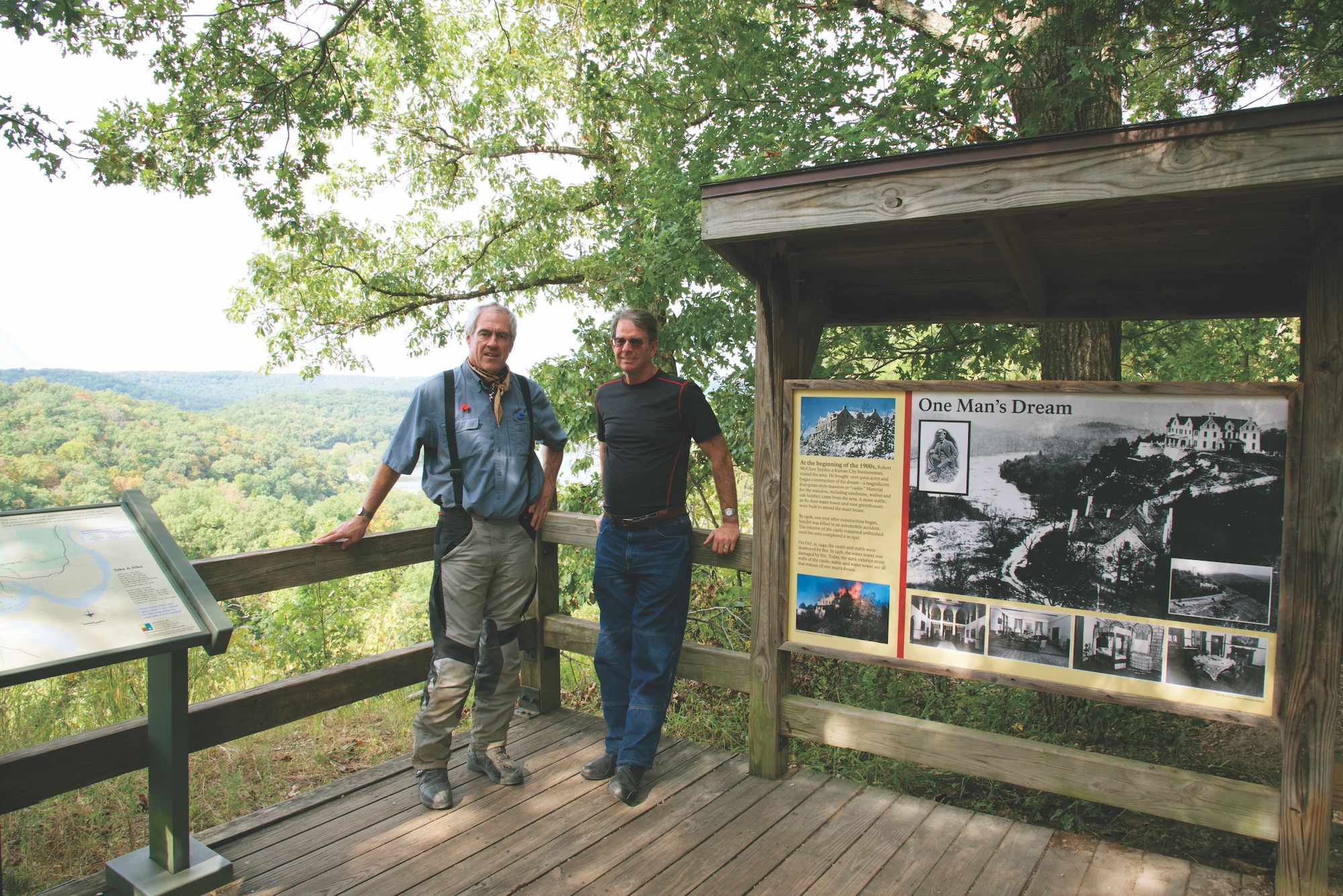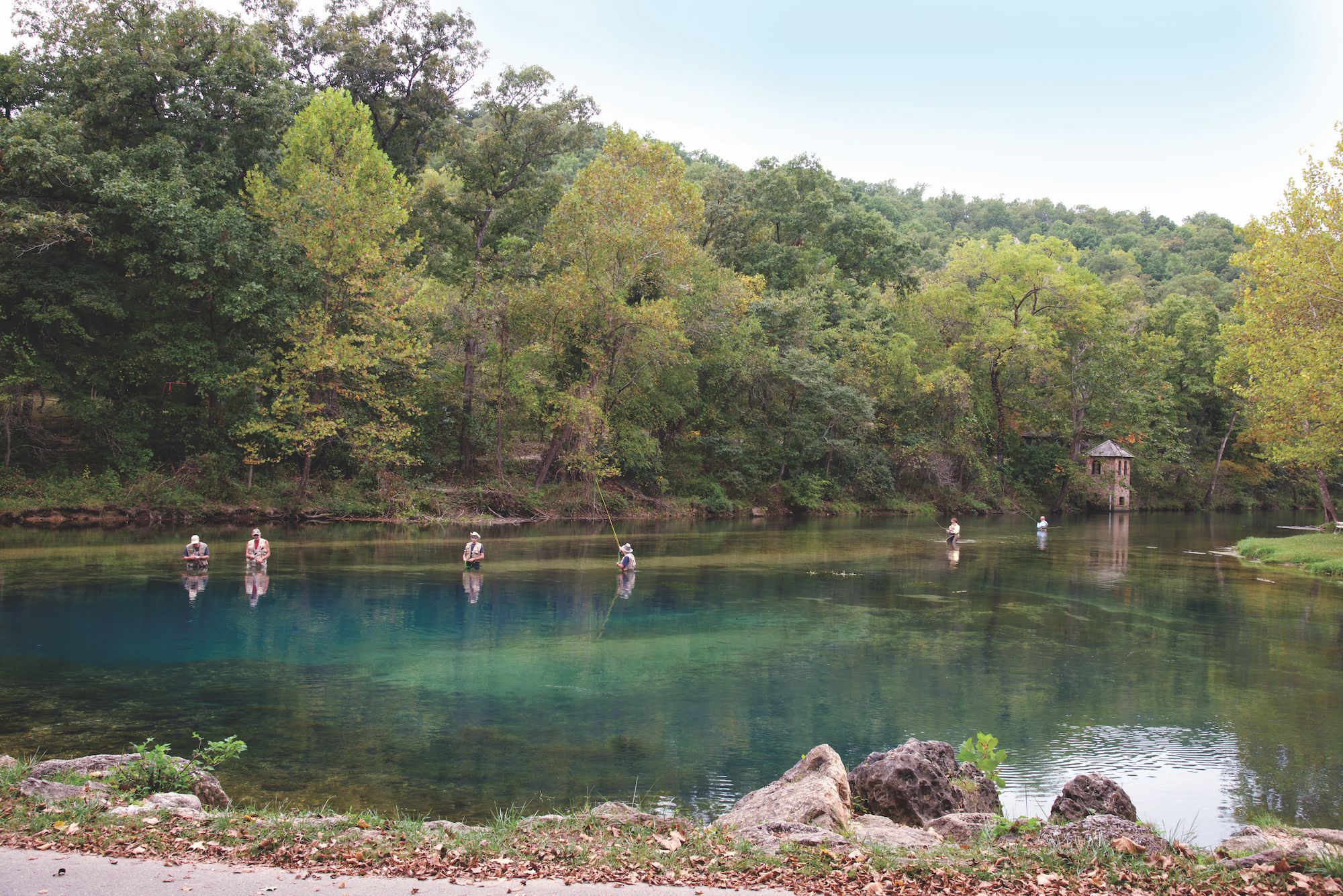St. Robert, Missouri Shamrock Tour®: Ozark Odyssey

A ruggedly elegant karst landscape, replete with caves, crystal clear springs, sheer-walled high bluffs, and verdant valleys greets us in central Missouri’s Ozarks. Inviting two-lane tarmac winds through much of the picturesque topography. Bob Brown, my wingman, is astride a 2016 Indian Chief Vintage and I’m piloting the 2016 Indian Roadmaster. Eddie McLiney, who helped arrange this trip and is our Ozark guide for the first few days, is riding his BMW R 1200 GS Adventure. Gentlemen, start your engines and let’s go!
Laughing Waters
With dry weather and morning temperatures in the 70s, we leave our home base in St. Robert, MO. Our riding fun begins along the meandering Gasconade River. We zoom north on a progression of serpentine backroads, leaning and swooshing right to left until arriving at Lake of the Ozarks. This is a major tourist and weekend getaway destination in the Midwest. There are reportedly more than 70,000 private homes dotting the lake’s 1,150-mile shoreline.

Our first stop of the day is not far down the road, at the curiously named Ha Ha Tonka State Park. The name may have come from an Osage Indian phrase that translates to “laughing waters.” High atop a 250-foot bluff stands the eerie skeletal remains of a once grand European-style castle. Robert Snyder, a wealthy Kansas City businessman, started constructing his Ozark castle in 1905. Before its completion, though, he died in one of Missouri’s first car crashes.
Motorcycles & Gear
2016 Indian Roadmaster
2016 Indian Chief Vintage
Helmet: Schuberth C3 Pro
Jacket: Indian Motorcycle Tour Jacket
Pants: Draggin Jeans
Boots: Oxtar
Gloves: Element Short Gloves
After Snyder’s death, his sons continued work on the building, finishing it in 1920. But land rights litigation and other financial woes forced the family out. The property was operated as a hotel until 1942, when stray sparks from a fireplace turned the building into a raging inferno. The edifice’s stone walls and foundation were the only things left standing. The State of Missouri acquired the property in the 1970s and preserved the castle’s remains. It became the park’s signature feature.
We arrive at the Lead Mine Country Store at noontime and enjoy a sumptuous Amish prepared lunch. (Save room for fresh baked desserts.) Afterward, we’re cruising again on bucolic byways that lead to Bennett Spring State Park. The park’s spring gushes some 100 million gallons of fresh water each day. The conditions are perfect for stocking rainbow and brown trout. Just the upper torsos of fly fishermen are visible as we pass by. Eddie tells us that trout fishing in the Ozarks is an impassioned sport for many Missourians. We linger near a waterfall, within sight of a gracefully arched stone bridge, to soak up the park’s tranquil ambiance.

More Springs, Hills, and Mills
We’re greeted by blue skies and warm temperatures again this morning. Eddie has designed for us a 232-mile route through Ozark country. Today’s journey begins on none other than Historic Route 66.
Devils Elbow is one of those old Route 66 communities that survived into the 21st century. This sleepy burg, which dates back to 1870, is named after a sharp bend in the nearby Big Piney River. Devils Elbow was once a resort stop for travelers on the Mother Road. The famous Munger-Moss Sandwich Shop, constructed in the 1930s, still remains. It’s doing business as the Elbow Inn and serves a killer menu of barbeque, especially favored by passing motorcyclists.

In the early days of automobile travel, Missouri didn’t have the funds to build a bridge over every stream. One- and two-car ferries, propelled by water currents, filled the gap in rural Missouri. Stopping at Akers Ferry, we learn that this two-car ferry is the last one still operating in the state. It runs during daylight hours as weather permits and currently charges a fee of .
We ride Route 106 east from Summersville. The topography transitions from flat agricultural land to forested, hilly terrain. The two-lane tarmac slithers atop a ridge with expansive vistas to the south. Putting kickstands down in Alley, we behold a charming sight. A bright red gristmill sits next to the rippling, aquamarine waters of Alley Spring, and old growth hardwoods overhang cool surrounding meadows.
